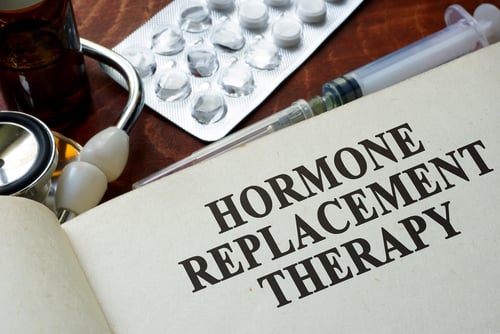Bio-Identical Hormones vs Synthetic Hormones?
By Dr. Stephen Cosentino
PRESIDENT OF EMPIRE MEDICAL TRAINING
 For many physicians and affiliated health professionals what we do not fully understand we quite often dismiss since we were not exposed to the science in medical school or pharmaceutical programs. Most everyone still remembers the Steroidogenic Pathways and metabolism but very few understand the role of hormones in today’s medical environment. Despite clinical studies that document the benefits of hormone replacement therapies, many women do not take any form of HRT and suffer from diminished quality of life from systems related to hormone deficiencies.
For many physicians and affiliated health professionals what we do not fully understand we quite often dismiss since we were not exposed to the science in medical school or pharmaceutical programs. Most everyone still remembers the Steroidogenic Pathways and metabolism but very few understand the role of hormones in today’s medical environment. Despite clinical studies that document the benefits of hormone replacement therapies, many women do not take any form of HRT and suffer from diminished quality of life from systems related to hormone deficiencies.
Synthetic Non-bio-identical Hormones
Bio-identical hormones have been used for hundreds of years but the technology to deliver these natural hormones painlessly to the patient was not developed until the 1980’s – thus the creation of synthetic hormones by the pharmaceutical companies. The first of the non-bio-identical hormones to be produced was conjugated equine estrogens (CEEs) and were very popular until associated with endometrial cancers. Pharmaceutical companies then developed progestin, a non-human form of progesterone, which unfortunately most medical doctors do not fully understand the differences as they consider them the same drug. The combination of adding progestin and the conjugated equine (typically horse) estrogens alleviated the cancer concerns but also created a trade-off of side effects and did not fully alleviate the symptoms that people needed hormones for. Synthetic progestins increase LDL and decrease HDL cholesterol and drastically diminish SHBG (sex hormone-binding globulin) thus potentially increasing androgenicity in patients as it binds to more receptors in the body. It is estimated that less than 20% of women taking synthetic hormones continue on a long-term basis.Development of Bio-Identical Hormones
By the late 1980s micronized “human” progesterone became available thus enabling BHRT to be released slowly and be absorbed by various means. Bio-identical hormones are created and derived from diosgenin; a type of plant oil which is chemically altered through the use of enzymes to exactly match our human bio-identical steroid hormones. There are more than (15) endogenous steroid hormones within our bodies with unique metabolites that allow for enzymes to convert them as needed. We categorize hormones into (5) major groups:- Estrogens (estrodial (E2), estrone (E1), estriol (E3)
- Mineral corticosteroids (aldosterone)
- Progesterone
- Glucocorticoids (cortisone, cortisol)
- Androgens (androstenedione, DHEA, testosterone)
Conclusion
Integrated medicine is becoming very popular as the next generation “baby boomers” do not want to age gracefully and wish to feel younger, longer, and be as active as possible. Hormone deficiencies in men and women have direct relationships with a number of chronic conditions including fatigue, sleep disorders, mood swings, memory, osteoporosis, and sexual dysfunction to name a few. Bio-identical hormones have distinct advantages over their synthetic and non-bio-identical counterparts which include:- Bio-identical hormones are individualized, well-tolerated with few side effects.
- Bio-identical hormones can be incorporated in a number of delivery systems that allow for controlled absorption and regulate blood hormone levels at a steady rate.
- Non-bio-identical hormones contain animal hormones and are not controlled in the way that they bind to hormone receptors.
- Non-bio-identical hormones have numerous side effects and poor patient compliance due to varied side effects.
- Non-bio-identical hormones cannot flow through the steroid pathway as do our endogenous precursor steroids.
- Bio-identical testosterone, estradiol, and progesterone are FDA approved, Estriol is not FDA approved for BHRT.


